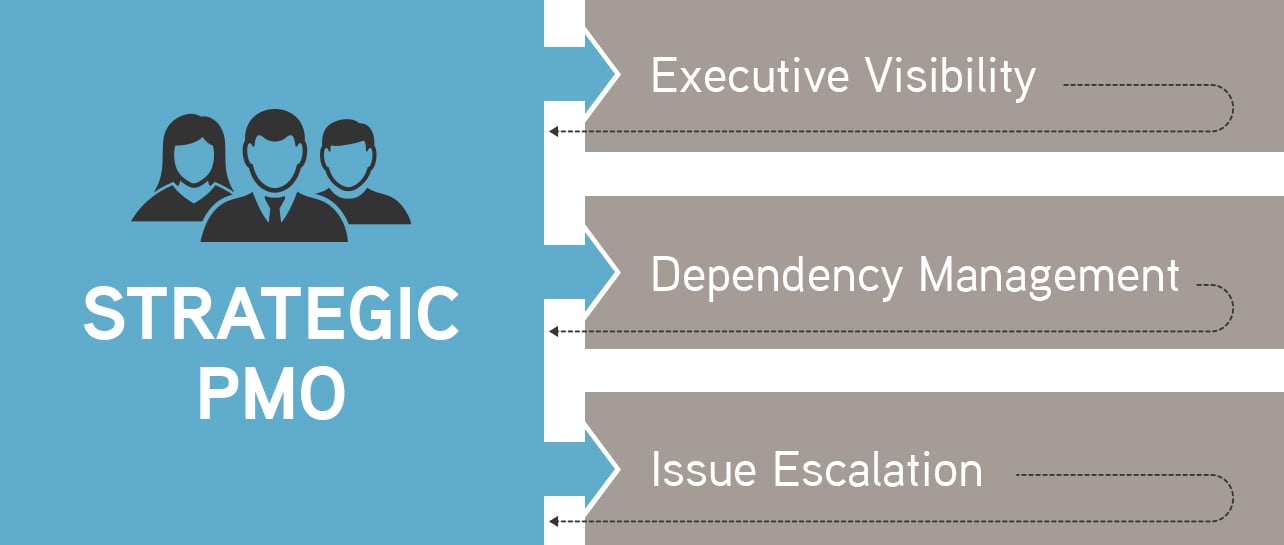
Many enterprises have established Program and Project Management Officers (PMOs) to provide oversight and accountability for projects, yet struggle to justify their value. Despite its prevalence, there are still many misperceptions about the role of today’s PMO. Unfortunately, project owners often perceive its oversight and accountability as a tax on their project. Project owners view their cooperation as a duty, not recognizing PMO involvement might be a benefit. So, to avoid being penalized, they adhere to the letter of guidelines set forth by the PMO with the same pained resignation with which they do their taxes. For those who understand the potential of an effective PMO, this attitude is frustrating. These project owners are missing an opportunity: a truly effective, strategic PMO isn’t just overhead. It plays a crucial role in streamlining and orchestrating efficient projects.
The Project Owner’s Viewpoint

A common refrain from project owners to the PMO is, “I’m driving real change here and all you do is tell me to tell you what I’m doing!” This complaint is understandable. Most people don’t enjoy getting audited by the IRS, and that’s exactly how PMO requirements can feel to project owners. This perception arises because most corporate PMOs cover a broad spectrum of projects and efforts. That means they lack time or bandwidth to fully understand each project in context. Since they need to provide consistency in reporting, many PMOs rely on cookie-cutter project plans and regimented status updates. Some structure is essential, but force-fitting everyone into one monolithic standard can be counterproductive.
Building a new reputation
To change its negative reputation, the style and orientation of the PMO must change from dictating policies and structure to facilitating change. Facilitation involves being able to navigate among competing projects. To do this effectively, the PMO needs to understand the context for each project. Understanding the context helps the PMO align priorities and make sense of competing requirements. A close sibling to facilitation is collaboration. A collaborative PMO is one that integrates with projects and seeks to offer opportunities to its project owners rather than merely demanding project statuses.
Adding value through service
A PMO can provide oversight and accountability while also adding value for project owners. The strategic PMO will be a boon to its organization by ensuring project delivery is orchestrated collaboratively. The PMO should present opportunities to project owners, rather than just consolidating statuses and project plans. The consolidation of multiple project statuses for senior leadership, while important, should only be the means to an end. The PMO that adds real value is one that provides project owners with opportunities to get senior leadership or external stakeholder feedback and buy-in. These are contributions that will resonate with project owners.
To ensure it is adding value to the projects it is managing, a strategic PMO should focus on consistently providing these three services: executive visibility, dependency management, and issue escalation.
Executive Visibility – Set regular executive check-ins and structure these check-ins as working sessions for senior staff to weigh in on cross-project issues.
Dependency Management – Identify dependencies across supporting functions (e.g. finance, legal, human resources) and between projects. Plan for those dependencies and understand the implications for all projects.
Issue Escalation – Track issues formally and visibly to ensure prompt resolution.
Do these well, and project owners will understand how the PMO can help them be successful.

Want to read more on how to run a successful PMO? Check out these resources:
Seven Keys to Establishing a Successful PMO, CIO Magazine The Secrets to Successful Strategy Execution, Harvard Business Review Value of Project Management, Project Management Institute
